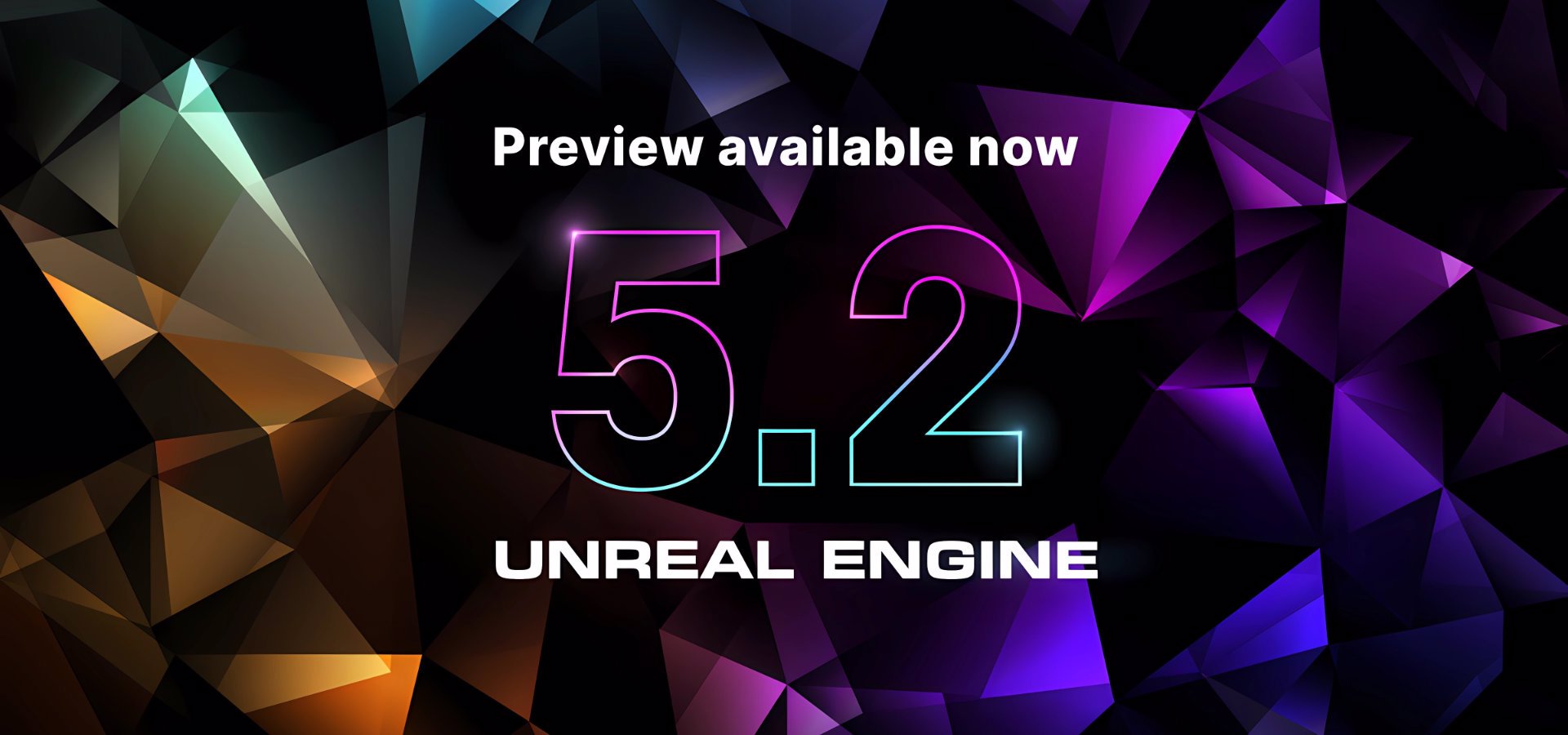Unreal Engine 5.6 has arrived, maintaining its regular cadence of major updates approximately every six months. This release comes with a strong emphasis on overall engine performance, aiming to help developers create larger-scale open worlds that run smoothly on current-generation hardware.
Other areas of focus include continued efforts to minimize the need for round-tripping to DCC (Digital Content Creation) tools for animation and rigging, as well as the ability to author MetaHumans directly within the engine. Together, these improvements were made to deliver a more streamlined and integrated development experience.
Now, without further ado, let's dive into what's new in this release:
Rendering
Unreal 5.6 features enhancements to the Hardware Ray Tracing (HWRT) system, which are designed to deliver improved performance for Lumen Global Illumination. These enhancements eliminate key CPU bottlenecks, enabling developers to author more complex scenes while maintaining a smooth 60 FPS frame rate.
There have been significant improvements to overall engine performance when streaming static content in and out at runtime. With the currently experimental Fast Geometry Streaming Plugin, developers can include a greater amount of immutable static geometry in their worlds, which will load faster while maintaining consistent frame rates. All projects will also benefit from other improvements to content streaming, such as asynchronous physics state creation and destruction.
Device profiles have been optimized for 60 FPS and tailored for current-generation consoles and desktop platforms, enabling developers to meet performance targets while minimizing setup.
Animation
When it comes to animation, Epic Games claims this release includes the biggest update yet to the in-editor toolsets, enabling animating with greater speed, precision, and control.
Animations can now be edited visually and intuitively with the complete redesign of Motion Trails. This redesign has been unified for both actors and character controls, enabling the adjustment of arcs and spacing directly in the viewport. Developers can choose from styles like Dashed, Time-based, and Heat/Speed mode, and access features that include pinning, offsets, and spaces for additional precision.
Tween Tools have been revamped, making it easier and faster to fine-tune animations using controls or selected keyframes. Hotkeys have been added for indirect slider control, and sliders can now be selected from various types or switched into Overshoot mode. In addition, a new Time Offset slider provides developers with greater control when creating or editing animations.
The Curve Editor has been redesigned, making it easier and cleaner to manipulate keyframes. Icons have been streamlined and consolidated, and new Tween Tools have been directly embedded within the Curve Editor interface for quicker access. A new Lattice Tool and a Smart Key Snapping feature have also been added for greater control over dense keyframe data.
The Sequencer has also been updated and now offers a new Sequencer Navigation Tool, allowing complex hierarchies to be seamlessly navigated. Additionally, developers can sync animation, dialogue, and effects more confidently using real-time Audio Scrubbing. The Sequencer has also received support for Scale Relatively, currently in an experimental state, which enables sequences to match timing from different languages based on localized audio.
Other new experimental features enable additional in-editor rigging workflows. Developers can now create and sculpt morph targets directly in the editor with the Skeletal Mesh Editor. This feature leverages the engine's built-in modeling tools, allowing for easy editing of pre-existing morph targets and sculpting of blend shapes during PIE (Play-in-Editor).
The new experimental Control Rig Physics feature makes it easy to add procedural physics motion to character rigs for more dynamic movement. A new ragdoll physics feature is now built into the rig to create more lifelike and responsive animations.
The MetaHuman Creator is now fully embedded within the engine and includes various additional enhancements. It now offers the ability to create a near-infinite range of plausible body shapes, just as was previously possible for faces, while a new Unreal Engine Outfit asset makes it possible to generate complete outfits for MetaHumans that automatically resize to fit. In addition, developers can benefit from the significant expansion of MetaHuman's database of real-world scan data of faces and bodies to create a more varied range of higher-fidelity characters.
The MetaHuman Animator has also received improvements and now enables the capture of actors' performances in real time using most webcams and many smartphones, as well as from audio.
Finally, MetaHumans now feature new licensing options, enabling them to be used with any engine or creative software. There are also new plugins for DCCs and integration with the Fab marketplace.
User Interface
The editor has been updated to deliver faster workflows, smarter content organization, and quicker access to tools for efficient work.
The Content Browser has been redesigned to enhance asset organization and viewing, and now provides smoother thumbnail resizing along with seamless support for both horizontal and vertical orientations.
The Viewport Toolbar's Section Menus and Quick Access Controls have been revamped to provide faster access to essential tools. The toolbar now resizes dynamically to show relevant tool options, with dedicated controls for Selection and Modeling modes, and a consistent look across Asset Editors.
Developer iteration
This update includes improvements aimed at increasing iteration speeds during development and delivering content faster across target platforms and devices. One of these improvements is the redesigned Project Launcher UI, currently in Beta, which makes it faster to create and manage device launch profiles. It features a streamlined interface that enables quick selection of build, cooking, and device deployment configurations.
The Zen Streaming feature has now reached Beta status. This feature enhances productivity by eliminating the time-consuming steps of full packaged builds and copy/install deployments, streamlining content iteration and testing on target platforms.
Cooking times can also be sped up with the new Incremental Cook experimental feature. It analyzes asset changes and cooks only the updates, enabling faster iteration on target devices.
Procedural Tools
In this release, the procedural content generation framework (PCG) has been enhanced to create worlds and manage complex scenes more efficiently, with improved GPU-driven performance.
The Node Graph UX has been updated to support inline constants, making it easier to create, drag and drop, and manipulate elements.
A new 3D viewport allows for previewing points, textures, and meshes, while customizable graph templates with node filtering help streamline workflows and enable faster in-context iteration.
There have been improvements to GPU performance and stability, particularly in managing instances within dense, complex scenes. CPU overhead has been reduced, allowing for smoother and more efficient GPU-based spawning at runtime. This provides greater flexibility and precision when working with instancing.
Overall PCG performance has been improved with multithreading support, enabling the system to distribute workloads more efficiently across multiple cores for faster processing, smoother interactions, and a more responsive experience, especially in complex or large-scale environments.
Creating and updating Biomes is now faster and more intuitive with the PCG Biome Core v2 plugin. New features like per-biome blending and biome layering support offer greater control for building rich, organic environments more efficiently.
Note that all of these features are currently in Beta, with the exception of the Biome Core v2 plugin, which is in an experimental state.
Cinematics
Unreal Engine 5.6 offers a suite of new integrated tools that provide enhanced control over production pipelines, including streamlined performance capture and cinematic rendering.
The new experimental Mocap Manager is an end-to-end solution for visualizing, recording, and managing performance capture, all within the Unreal Editor. It can help teams speed up creation by guiding them through asset management, mocap stage setup, performer/character configurations, Live Link data previewing, and more.
An experimental Capture Manager has been integrated with Live Link Hub, offering precise control over ingesting and processing MetaHuman takes from mobile devices, video files, and stereo head-mounted cameras (HMCs). Multiple facial performances can be easily managed and distributed with third-party facial capture systems across the Unreal Engine and MetaHuman ecosystem.
In cinematics, there's a new experimental, pipeline-friendly Cinematic Assembly Toolset (CAT). It includes everything from swappable project configurations and customizable naming tokens to reusable cinematic templates. This toolset works alongside integrated tools like Take Recorder and Movie Render Queue to help manage shot pipelines from start to finish.
The new Quick Render feature, currently in Beta, allows developers to accelerate rendering workflows, enabling the rendering of stills and sequences from the viewport and selected cameras to disk with a single click using the settings defined in Movie Render Graph.
This is just a summary of what's new in this release. For the full list of features and updates, be sure to check out the official release notes. To learn more about the updated licensing terms for MetaHumans, visit the MetaHuman licensing page.




